Themed collection Biocatalysis: Natural and biologically inspired synthetic enzymes

Evolution inspired engineering of antibiotic biosynthesis enzymes
Chimeragenesis is an effective tool to probe the structure/function relationships of proteins without high-throughput screening systems. Here the proof-of-principle is presented with three pairs of proteins.
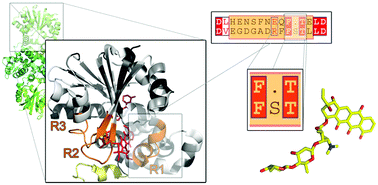
Org. Biomol. Chem., 2017,15, 4036-4041
https://doi.org/10.1039/C7OB00189D
Immobilized enzymes: understanding enzyme – surface interactions at the molecular level
Interactions between immobilized enzymes and supporting surfaces are complex and context-dependent and can significantly alter enzyme structure, stability and activity.

Org. Biomol. Chem., 2017,15, 9539-9551
https://doi.org/10.1039/C7OB01880K
A decade of DNA-hybrid catalysis: from innovation to comprehension
Since the pioneering work of Roelfes and Feringa in the field of DNA-based asymmetric catalysis, the unique chirality of oligonucleotides has allowed the development of a variety of asymmetric synthetic transformations. This review offers a complete overview of the field.

Org. Biomol. Chem., 2017,15, 7072-7087
https://doi.org/10.1039/C7OB00176B
Aerobic catalytic systems inspired by copper amine oxidases: recent developments and synthetic applications
Recently, chemists have developed aerobic quinone-based catalytic systems in order to reproduce enzymatic activity and selectivity of copper amine oxidases but also to expand the scope of amine substrates.

Org. Biomol. Chem., 2017,15, 4722-4730
https://doi.org/10.1039/C7OB00507E
Spatial organization of multi-enzyme biocatalytic cascades
Multi-enzyme cascades provide a wealth of valuable chemicals. Efficiency of reaction schemes can be improved by spatial organization of biocatalysts. This review will highlight various methods of spatial organization of biocatalysts: fusion, immobilization, scaffolding and encapsulation.
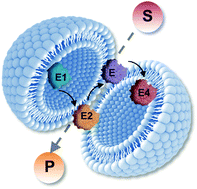
Org. Biomol. Chem., 2017,15, 4260-4271
https://doi.org/10.1039/C7OB00391A
Post-translational modifications involved in the biosynthesis of thiopeptide antibiotics
Thiopeptide antibiotics are generated from ribosomally synthesized peptides via a cascade of post-translational modifications (PTMs).

Org. Biomol. Chem., 2017,15, 3376-3390
https://doi.org/10.1039/C7OB00466D
Is more better? A comparison of tri- and tetrapeptidic catalysts
From an enzymatic perspective, there is a general notion that the bigger and more complex a catalytically active peptide is the more enzyme-like and the better it should become. But is this really true?

Org. Biomol. Chem., 2017,15, 5877-5881
https://doi.org/10.1039/C7OB01039G
Novel chemoenzymatic oxidation of amines into oximes based on hydrolase-catalysed peracid formation
The efficient transformation of benzylamines into the corresponding oximes has been described by means of a chemoenzymatic process.
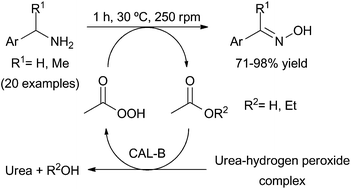
Org. Biomol. Chem., 2017,15, 3196-3201
https://doi.org/10.1039/C7OB00374A
Structural insights into the ene-reductase synthesis of profens
New insight into the general utility of ene reductases for the synthesis of profens is established using structural and biocatalytic approaches.

Org. Biomol. Chem., 2017,15, 4440-4448
https://doi.org/10.1039/C7OB00163K
Exploring the reversal of enantioselectivity on a zinc-dependent alcohol dehydrogenase
Alcohol Dehydrogenase (ADH) enzymes catalyse the reversible reduction of prochiral ketones to the corresponding alcohols.

Org. Biomol. Chem., 2017,15, 4122-4129
https://doi.org/10.1039/C7OB00482F
A carbonyl reductase from Candida parapsilosis ATCC 7330: substrate selectivity and enantiospecificity
A purified carbonyl reductase (SRED) asymmetrically reduces ketones and α-ketoesters to (S)-alcohols with a potential application in the synthesis of industrially important chiral molecules.

Org. Biomol. Chem., 2017,15, 4165-4171
https://doi.org/10.1039/C7OB00340D
Improving target amino acid selectivity in a permissive aminoacyl tRNA synthetase through counter-selection
We report the selection and characterization of an improved acridon-2-ylalanine aminoacyl tRNA synthetase.
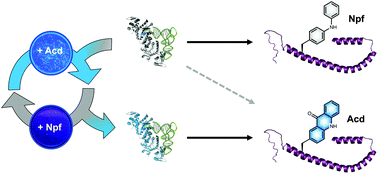
Org. Biomol. Chem., 2017,15, 3603-3610
https://doi.org/10.1039/C7OB00582B
Multidrug resistance regulators (MDRs) as scaffolds for the design of artificial metalloenzymes
Artificial metalloenzymes were created from multidrug resistance regulator proteins by in vivo incorporation of an unnatural metal binding amino acid.

Org. Biomol. Chem., 2017,15, 3069-3073
https://doi.org/10.1039/C7OB00390K
Inter- and intramolecular aldol reactions promiscuously catalyzed by a proline-based tautomerase
The enzyme 4-oxalocrotonate tautomerase, which has a catalytic amino-terminal proline, was shown to promiscuously catalyze inter- and intramolecular aldol reactions.
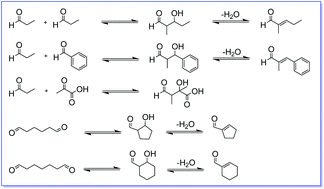
Org. Biomol. Chem., 2017,15, 2809-2816
https://doi.org/10.1039/C7OB00302A
Converting Pasteurella multocida α2–3-sialyltransferase 1 (PmST1) to a regioselective α2–6-sialyltransferase by saturation mutagenesis and regioselective screening
A sialyltransferase mutant for selectively α2–6-sialylating terminal galactose in polyLacNAc-glycan was identified using a novel microtiter plate-based screening assay.

Org. Biomol. Chem., 2017,15, 1700-1709
https://doi.org/10.1039/C6OB02702D
Constrained evolution of a bispecific enzyme: lessons for biocatalyst design
Analysis of the natural evolution of bispecificity in triazine hydrolase highlights the importance of epistasis in protein engineering and evolution.
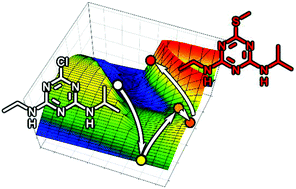
Org. Biomol. Chem., 2017,15, 937-946
https://doi.org/10.1039/C6OB02355J
About this collection
Biocatalysis includes a range of topics related to catalysis by molecules obtained or derived from biology. This issue, Guest Edited by Professor Scott K. Silverman and Professor Douglas A. Mitchell, will cover the following topics:
1. Study of naturally occurring biological catalysts (protein enzymes and ribozymes)
2. Protein engineering and directed evolution, including computational tools
3. Metabolic engineering for synthetic chemistry
4. Development of synthetic biologically inspired catalysts, including small-molecule catalysts
Articles in this themed collection will be added below as soon as possible after they are published.
Please return to this page frequently to see the collection grow.